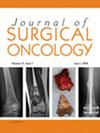Robot-Assisted Versus Open Surgery for the Resection of Large Thymomas: A Retrospective Cohort Study
Abstract
Background
Robot-assisted thoracic surgery (RATS) is increasingly becoming the preferred surgical method for the resection of thymomas. We initiated the current study to evaluate perioperative outcomes and early recurrence associated with the surgical approach.
Methods
In this retrospective cohort study, 35 patients were included in the RATS group and compared with 29 patients who underwent open surgery between 2010 and 2022 for histologically confirmed large thymoma > 50 mm in TNM Stages I, II, and IIIa.
Results
Histologic subtypes and pathologic stages were similar in both groups. The median duration of chest drainage and median length of stay was significantly shorter in the RATS group (1 vs. 4 days, p < 0.0001, and 4 vs. 10 days, p < 0.0001, respectively). Postoperative complications occurred more frequently in the open surgery group (cumulative incidence of 8.6% vs. 37.9%, p = 0.0048). The median follow-up time was 28 months in the RATS group and 69 months in the open surgery group. Five-year recurrence-free survival was 96.9% without significant differences between the two groups.
Conclusion
There is no evidence of increased early recurrence associated with robotic surgery. The length of hospital stay, the duration of thoracic drainage, and the significantly lower complications favor the robot-assisted approach.


 求助内容:
求助内容: 应助结果提醒方式:
应助结果提醒方式:


